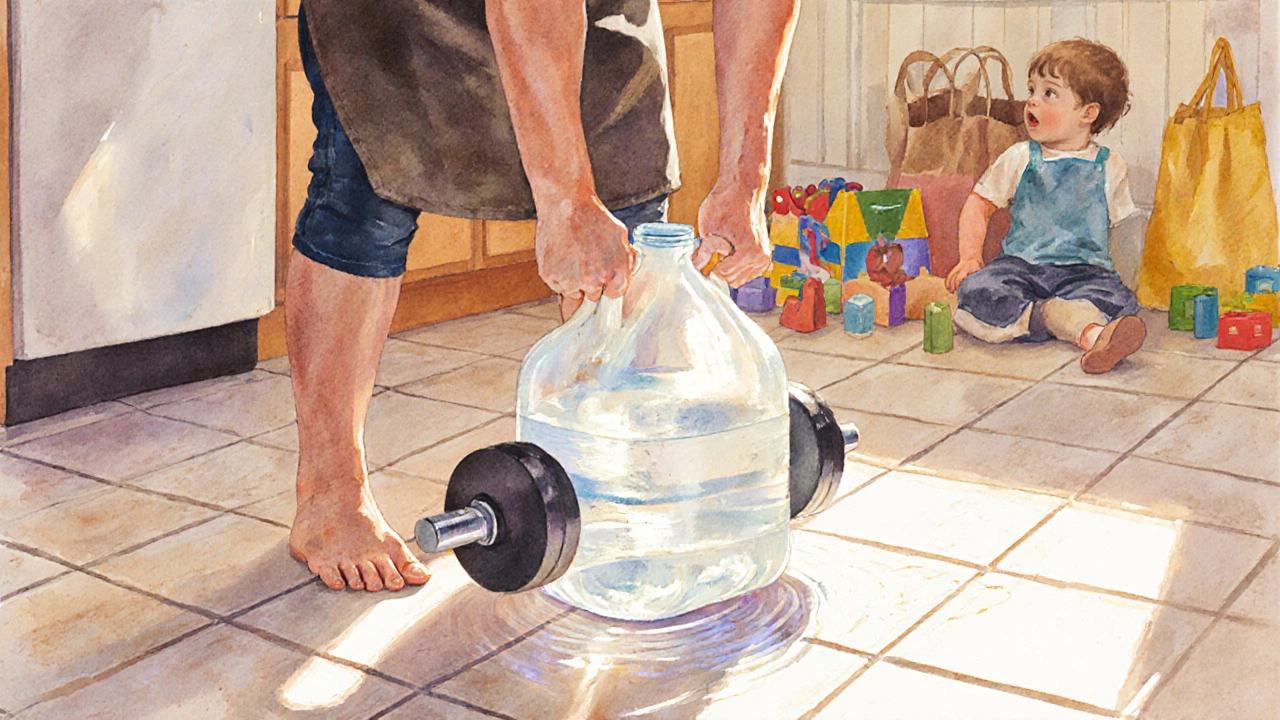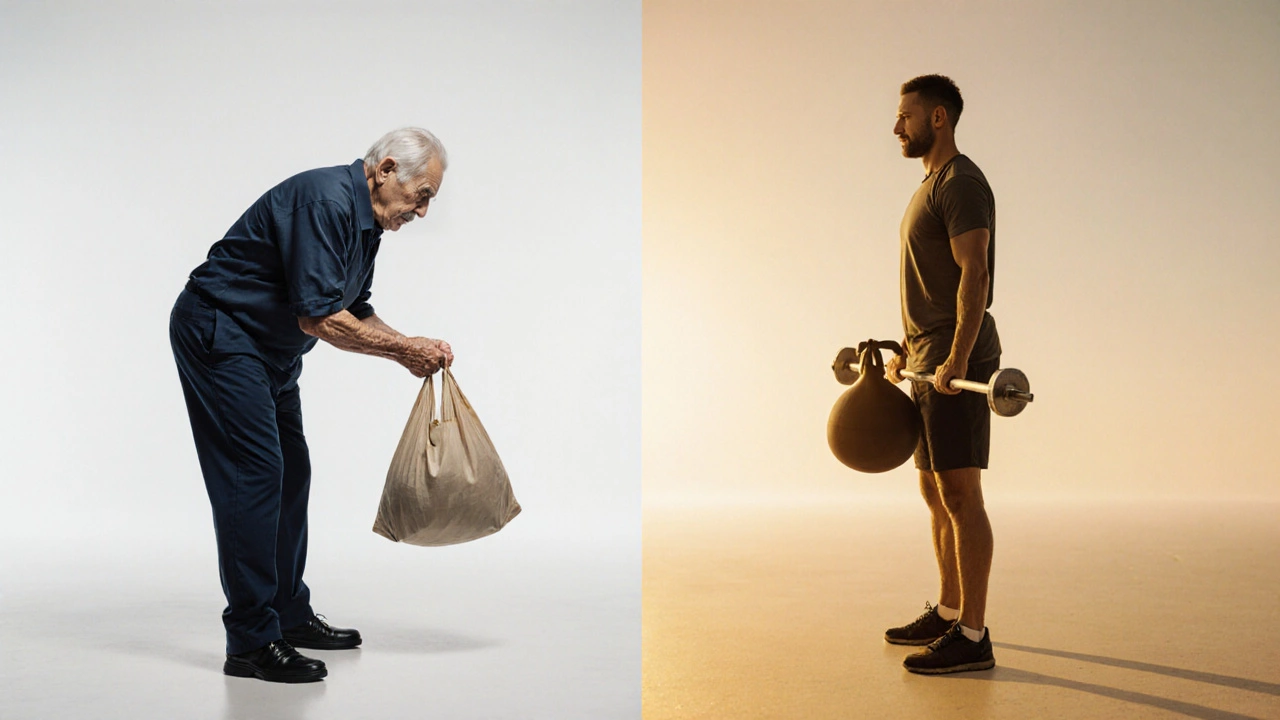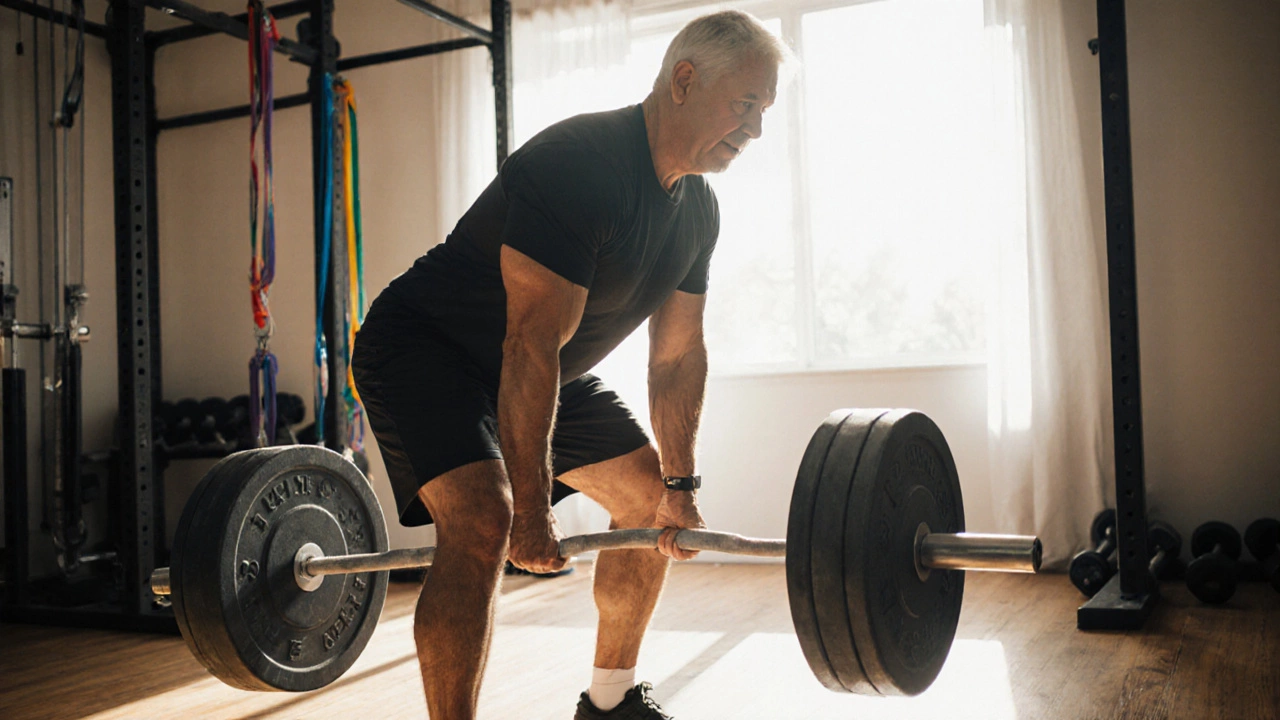If you only had time for one exercise to work your entire body, what would it be? Not the one that looks flashy on social media. Not the one that burns the most calories in five minutes. But the one that actually builds strength, moves your joints naturally, and keeps you functional for life. The answer isn’t a machine. It’s not a fancy gadget. It’s the deadlift.
Why the deadlift stands out
The deadlift isn’t just about lifting heavy. It’s about moving weight from the ground to standing - a movement we do every day when we pick up groceries, lift a child, or even just stand up from a chair. This one motion activates your glutes, hamstrings, lower back, core, shoulders, traps, and grip. No other single exercise hits this many major muscle groups with such efficiency.
Studies from the Journal of Strength and Conditioning Research show that deadlifts improve spinal stability and reduce lower back pain in non-athletes when done with proper form. That’s not just about getting stronger - it’s about staying pain-free as you age. And unlike machines that isolate muscles, the deadlift trains your body to work as one unit. Your legs push. Your back holds. Your core tightens. Your arms grip. Everything connects.
What other exercises come close?
There are other full-body moves, but none match the deadlift’s combination of strength, function, and accessibility.
- Push-ups work chest, shoulders, triceps, and core - but they don’t challenge your posterior chain (back, glutes, hamstrings) like the deadlift does.
- Squats are great for legs and core, but they don’t train your upper back or grip strength the same way.
- Pull-ups build upper body strength, but your legs stay mostly idle.
- Kettlebell swings are explosive and cardio-friendly, but they lack the controlled strength-building phase of the deadlift.
Deadlifts combine the best of all these: pulling power, core bracing, leg drive, and grip endurance - all in one motion.
How to do a deadlift right (without hurting yourself)
Bad form turns the deadlift into a back injury waiting to happen. Good form turns it into a lifelong tool.
- Stand with your feet hip-width apart, barbell over the middle of your feet.
- Hinge at your hips, bend your knees just enough to grip the bar. Your shins should lightly touch the bar.
- Keep your chest up, shoulders slightly in front of the bar. Back flat - no rounding.
- Take a deep breath, brace your core like you’re about to get punched.
- Drive through your heels, stand up by pushing the floor away. Keep the bar close to your body - think of dragging it up your shins.
- At the top, squeeze your glutes. Don’t lean back.
- Lower the bar by pushing your hips back first, then bending your knees. Control the descent.
Start light. Even 20kg is enough to learn the pattern. Focus on movement quality over weight. If your back rounds at any point, you’re lifting too heavy.

What if you can’t do a barbell deadlift?
You don’t need a gym. You don’t need a barbell. You can still get the same benefits.
- Trap bar deadlift - easier on the lower back, more natural grip. Great if you’re new or have mobility issues.
- Sumo deadlift - wider stance, more hip focus. Good for people with longer torsos.
- Romanian deadlift - keeps knees slightly bent, focuses on hamstrings and glutes. Good for learning the hip hinge.
- Dumbbell deadlift - use two dumbbells instead of a bar. Easier to balance and less intimidating.
- Bodyweight hip thrusts + farmer’s carry - if you have zero equipment, pair glute bridges with walking while holding heavy bags. It mimics the pulling and carrying pattern.
In Durban, I’ve seen people use sandbags, water jugs, even backpacks filled with books to train deadlift patterns. The movement matters more than the tool.
How often should you do it?
Once a week is enough for most people. Two if you’re experienced and recovering well. Deadlifts are taxing on your nervous system - not just your muscles. That’s why you don’t need to do them every day.
Try this simple weekly plan:
- Monday: Deadlifts (3 sets of 5 reps)
- Wednesday: Light cardio or mobility work
- Friday: Bodyweight circuits (push-ups, squats, planks)
After six weeks, you’ll notice your posture improves. You’ll stand taller. You’ll lift things without groaning. Your legs will feel stronger just walking up stairs.

Who should avoid deadlifts?
No exercise is perfect for everyone. If you have:
- Recent spinal surgery or severe disc herniation - get clearance from a physiotherapist first.
- Chronic lower back pain that flares with bending - try the trap bar or kettlebell deadlifts with lighter loads.
- Severe osteoporosis - focus on controlled movements and avoid heavy loading. Consult a specialist.
But for 90% of people - young, old, active, sedentary - the deadlift is the most effective tool to rebuild functional strength. You don’t need to lift like a powerlifter. You just need to move well.
What happens when you stop?
Strength fades faster than you think. After just two weeks without loading your posterior chain, your glutes go quiet. Your back loses its stability. You start slouching. Picking up a heavy bag feels harder. That’s not weakness - it’s atrophy.
Deadlifts aren’t about looking strong. They’re about staying independent. About carrying your groceries without help. About playing with your grandkids without your back giving out.
The best exercise for your whole body isn’t the one that makes you sweat the most. It’s the one that keeps you moving for decades.
Is the deadlift the only full-body exercise I need?
No, but it’s the most efficient. For balanced fitness, add a pushing movement like push-ups or overhead presses, and some mobility work like hip openers or shoulder circles. But if you only do one lift, make it the deadlift. It covers more ground than any other.
Can I do deadlifts at home without equipment?
Yes. Use heavy household items like water jugs, backpacks with books, or sandbags. Focus on the movement pattern: hinge at the hips, keep your back straight, drive through your heels. The weight doesn’t have to be heavy - the technique does.
Why do my lower back hurt when I deadlift?
Most often, it’s because you’re rounding your back or lifting too heavy too soon. Your lower back isn’t designed to bear the load alone - your glutes and hamstrings should do the work. Practice the hip hinge without weight first. Use a mirror or film yourself. If pain continues, see a physiotherapist.
How long does it take to see results from deadlifts?
You’ll feel stronger in daily tasks within 2-3 weeks. Visible changes in posture and muscle tone take 6-8 weeks of consistent training. The real benefit - injury prevention and functional independence - builds over months and years.
Should I do deadlifts before or after other exercises?
Do them first. Deadlifts require the most neurological energy and focus. If you do them after squats or cardio, your form will suffer. Train them when you’re fresh.
